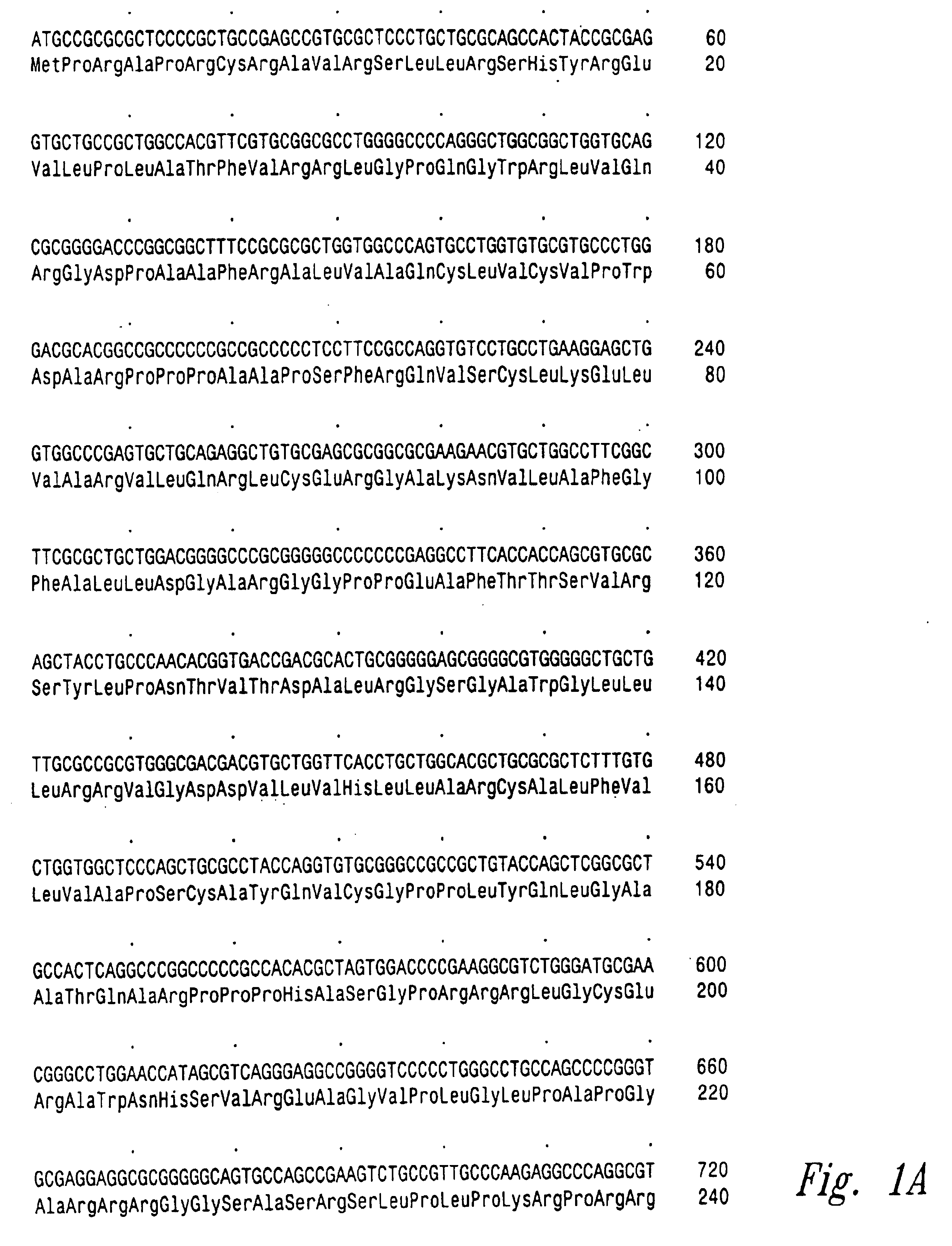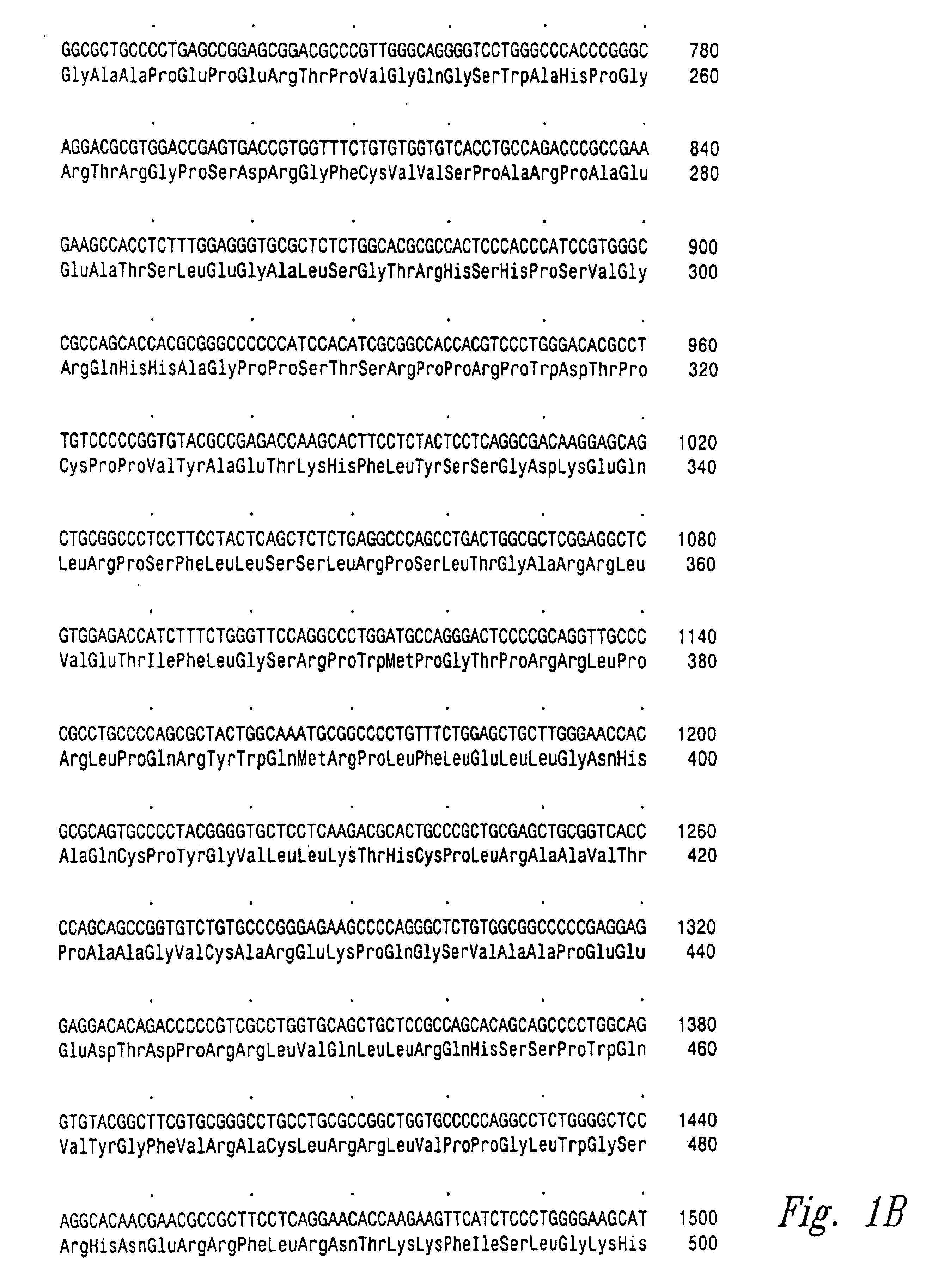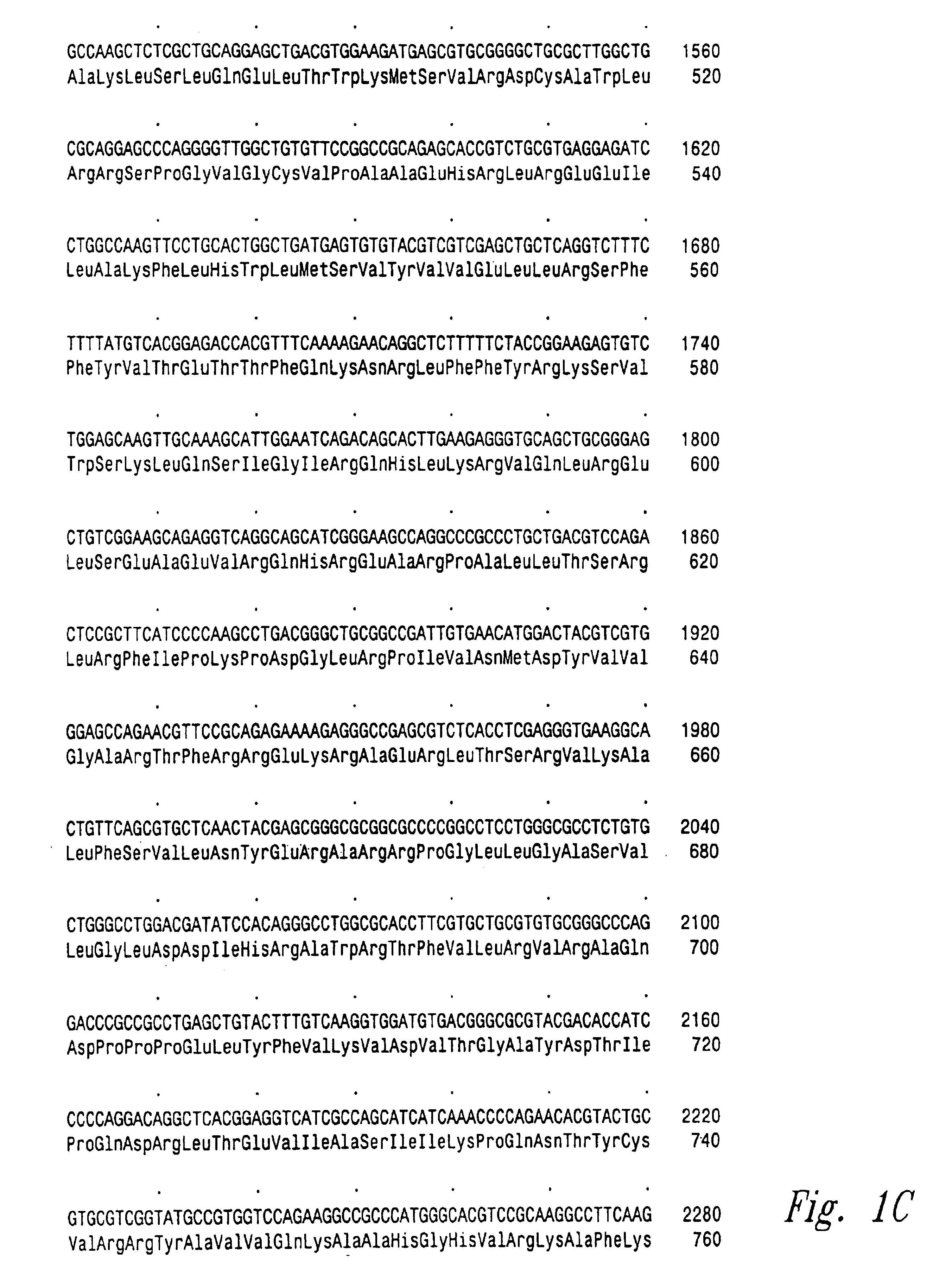Vertebrate telomerase genes and proteins and uses thereof
a technology of telomerase and vertebrate, applied in the field of telomerases, can solve the problems of end-replicating problems, difficult detection of telomerase activity in normal somatic human tissues, and relatively refractory isolation of protein components
- Summary
- Abstract
- Description
- Claims
- Application Information
AI Technical Summary
Benefits of technology
Problems solved by technology
Method used
Image
Examples
example 1
Identification and Isolation of the Human Telomerase Gene
[0146]A human telomerase gene is identified in a cDNA library constructed from a cancer cell line. The cDNA is subjected to DNA sequence analysis (Kilian et al., supra).
[0147]An EST sequence, GenBank Accession No. AA281296, is identified as partial telomerase gene sequence by a BLAST search against the Euplotes telomerase sequence, GenBank Accession No. U95964 (p=3.2×10−6). Amino acid sequence identity between the two sequences is approximately 38% and amino acid sequence similarity is approximately 60%.
[0148]To obtain longer clones of hT1, a number of cDNA libraries prepared from tumor cells are screened by amplification using primers from within the EST sequence. Primers HT1553F (SEQ ID No: 108) and HT1920R (SEQ ID No: 114), based on the EST sequence, are used to amplify an approximately 350 bp fragment in a variety of cDNA libraries. The amplification reaction is performed under “hot start” conditions. Amplification cycles ...
example 2
hT1 Sequence and Alignment with other Telomerases
[0155]Multiple sequence alignment demonstrates that the predicted hT1 protein is co-linear with the Euplotes and S. cerevisae telomerase catalytic subunits over their entire lengths (FIG. 2). Although the overall homology between the three proteins is relatively low (approximately 40% similarity in all pairwise combinations) the overall structure of the protein seems to be well conserved. Four major domains: N-terminal, basic, reverse transcriptase (RT) and C-terminal are present in all three proteins. The highest area of sequence similarity is within the RT domain. Notably, all the motifs characteristic of the Euplotes RT domain are present and all amino acid residues implicated in RT catalysis are conserved in the hT1 sequence (Lingner et al., Science 276: 561-567, 1997).
[0156]Recently, protein phosphatase 2A treatment of human breast cancer cell extracts has been shown to inhibit telomerase activity (Li et al., J. Biol. Chem. 272: ...
example 3
Characterization of Telomerase Gene
[0157]Northern analysis and Southern analysis are performed to determine the size of the telomerase transcript and whether telomerase gene is amplified in tumors cells.
[0158]For Northern analysis, polyA mRNA is isolated from LIM 1215 cells and from CCD fibroblasts. CCD is a primary human fibroblast cell line. Briefly cells are lysed by homogenization in a buffered solution (0.1 M NaCl, 10 mM Tris, pH 7.4, 1 mM EDTA) containing detergent (0.1 % SDS) and 200 μg / ml of proteinase K. SDS is added to the lysate to a final concentration of 0.5%, and the lysate is incubated at 60° C. for 1 hr and 37° C. for 20 min. The lysate is then incubated for 1 hr with a slurry oligo dT-cellulose that has been pre-cycled in 0.1 M NaOH and equilibrated in 0.5 M NaCl, 10 mM Tris pH 7.4, 1 mM EDTA, and 0.1% SDS. The resin is collected by centrifugation, batch washed in the equilibration buffer, and loaded into a column. The mRNA is eluted with warmed (37° C.) buffer (10 ...
PUM
| Property | Measurement | Unit |
|---|---|---|
| Tm | aaaaa | aaaaa |
| Tm | aaaaa | aaaaa |
| Tm | aaaaa | aaaaa |
Abstract
Description
Claims
Application Information
 Login to View More
Login to View More - R&D
- Intellectual Property
- Life Sciences
- Materials
- Tech Scout
- Unparalleled Data Quality
- Higher Quality Content
- 60% Fewer Hallucinations
Browse by: Latest US Patents, China's latest patents, Technical Efficacy Thesaurus, Application Domain, Technology Topic, Popular Technical Reports.
© 2025 PatSnap. All rights reserved.Legal|Privacy policy|Modern Slavery Act Transparency Statement|Sitemap|About US| Contact US: help@patsnap.com



